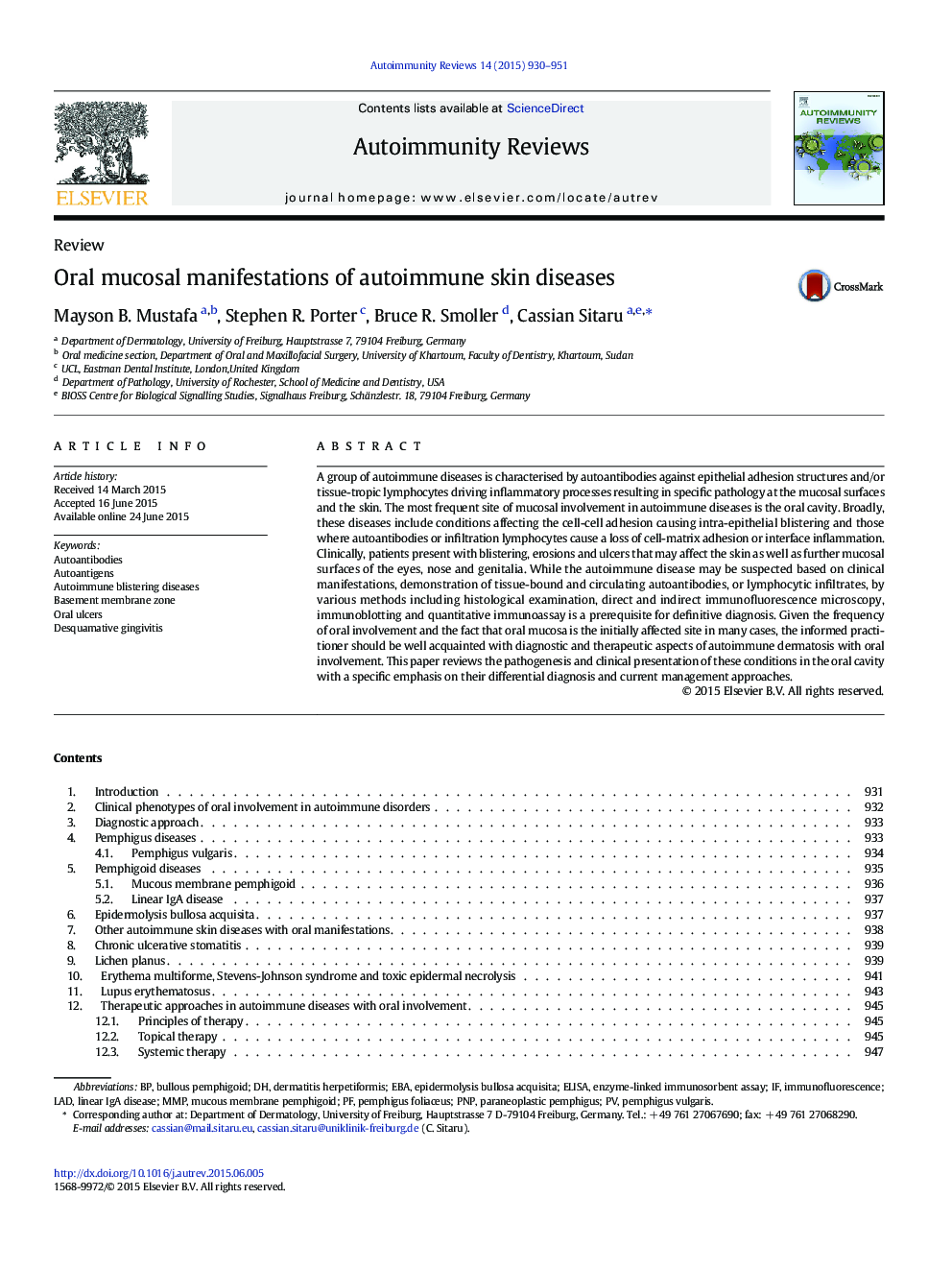| Article ID | Journal | Published Year | Pages | File Type |
|---|---|---|---|---|
| 3341567 | Autoimmunity Reviews | 2015 | 22 Pages |
A group of autoimmune diseases is characterised by autoantibodies against epithelial adhesion structures and/or tissue-tropic lymphocytes driving inflammatory processes resulting in specific pathology at the mucosal surfaces and the skin. The most frequent site of mucosal involvement in autoimmune diseases is the oral cavity. Broadly, these diseases include conditions affecting the cell-cell adhesion causing intra-epithelial blistering and those where autoantibodies or infiltration lymphocytes cause a loss of cell-matrix adhesion or interface inflammation. Clinically, patients present with blistering, erosions and ulcers that may affect the skin as well as further mucosal surfaces of the eyes, nose and genitalia. While the autoimmune disease may be suspected based on clinical manifestations, demonstration of tissue-bound and circulating autoantibodies, or lymphocytic infiltrates, by various methods including histological examination, direct and indirect immunofluorescence microscopy, immunoblotting and quantitative immunoassay is a prerequisite for definitive diagnosis. Given the frequency of oral involvement and the fact that oral mucosa is the initially affected site in many cases, the informed practitioner should be well acquainted with diagnostic and therapeutic aspects of autoimmune dermatosis with oral involvement. This paper reviews the pathogenesis and clinical presentation of these conditions in the oral cavity with a specific emphasis on their differential diagnosis and current management approaches.
